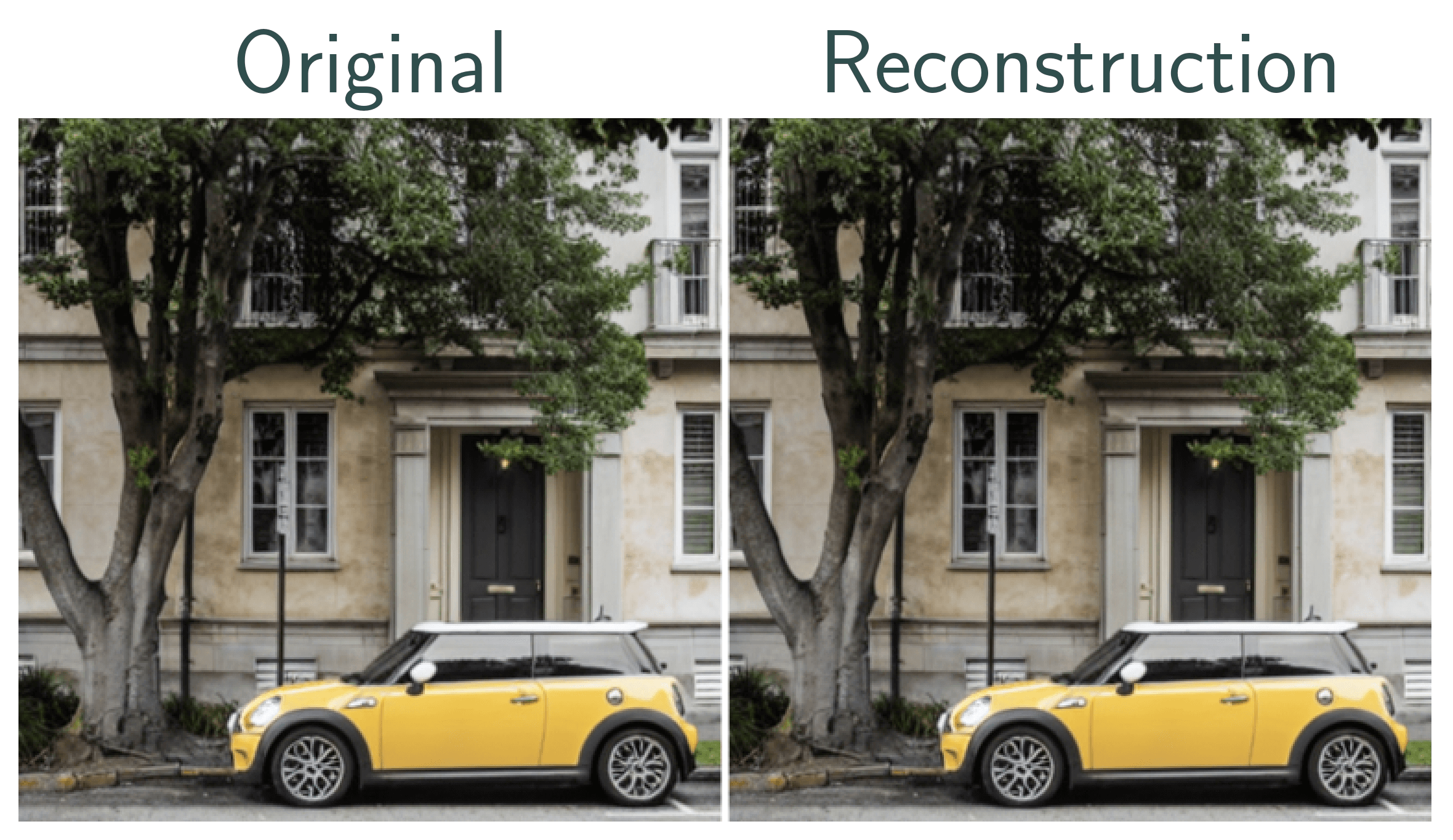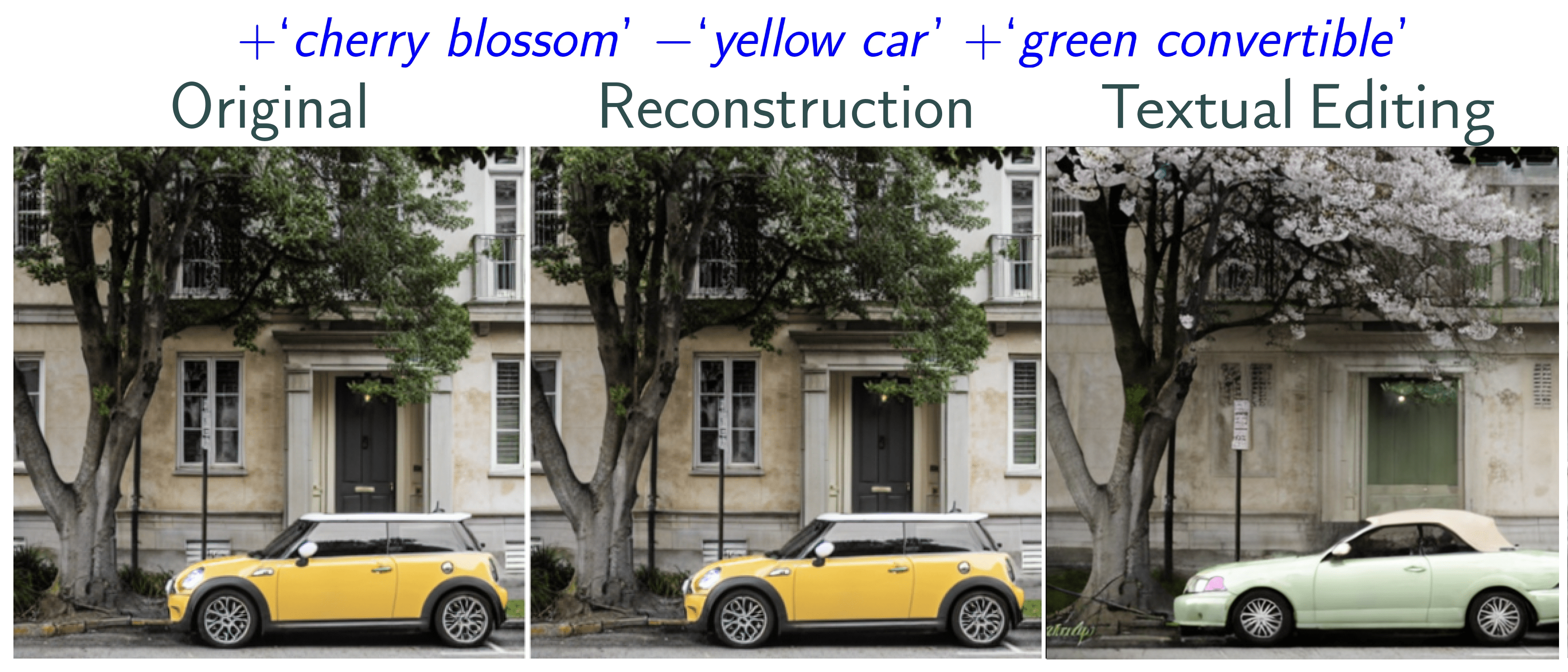We were rewarded with a Meta Quest 3 for being second place at the GenAI Media Generation Challenge Workshop @ CVPR!
LEDITS++: Limitless Image Editing using Text-to-Image Models
Awards
Abstract
Text-to-image diffusion models have recently received a lot of interest for their astonishing ability to produce high-fidelity images from text only. Subsequent research efforts are aiming to exploit the capabilities of these models and leverage them for intuitive, textual image editing. However, existing methods often require time-consuming fine-tuning and lack native support for performing multiple edits simultaneously. To address these issues, we introduce LEDITS++ , an efficient yet versatile technique for image editing using text-to-image models. LEDITS++ re- quires no tuning nor optimization, runs in a few diffusion steps, natively supports multiple simultaneous edits, inherently limits changes to relevant image regions, and is architecture agnostic.

LEDITS++: Efficient and Versatile Textual Image Editing
To ease textual image editing, we present LEDITS++, a novel method for efficient and versatile image editing using text-to-image diffusion models. Firstly, LEDITS++ sets itself apart as a parameter-free solution requiring no fine-tuning nor any optimization. We derive characteristics of an edit-friendly noise space with a perfect input reconstruction, which were previously proposed for the DDPM sampling scheme, for a significantly faster multistep stochastic differential-equation (SDE) solver. This novel invertibility of the DPM-solver++ facilitates editing with LEDITS++ in as little as 20 total diffusion steps for inversion and inference combined. Moreover, LEDITS++ places a strong emphasis on semantic grounding to enhance the visual and contextual coherence of the edits. This ensures that changes are limited to the relevant regions in the image, preserving the original image’s fidelity as much as possible. LEDITS++ also provides users with the flexibility to combine multiple edits seamlessly, opening up new creative possibilities for intricate image manipulations. Finally, the approach is architecture-agnostic and compatible with any diffusion model, whether latent or pixel-based.



Methodology
The methodology of LEDITS++ can be broken down into three components: (1) efficient image inversion, (2) versatile textual editing, and (3) semantic grounding of image changes.
Component 1: Perfect Inversion
Utilizing T2I models for editing real images is usually done by inverting the sampling process to identify a noisy xT that will be denoised to the input image x0. We draw characteristics from edit friendly DDPM inversion and propose an efficient inversion method that greatly reduces the required number of steps while maintaining no reconstruction error. DDPM can be viewed as a first-order SDE solver when formulating the reverse diffusion process as an SDE. This SDE can be solved more efficiently—in fewer steps— using a higher-order differential equation solver, hence we derive a new, faster technique - dpm-solver++ Inversion.

Component 2: Textual Editing
After creating our re-construction sequence, we can edit the image by manipulating the noise estimate εθ based on a set of edit instructions. We devise a dedicated guidance term for each concept based on conditioned and unconditioned estimate. We define LEDITS++ guidance such that it both reflects the direction of the edit (if we want to push away from/towards the edit concept) and maximizes fine-grained control over the effect of the desired edit.

Component 3: Semantic Grounding
In our defined LEDITS++ guidance, we include a masking term composed of the intersection between the mask generated from the U-Net’s cross-attention layers and a mask derived from the noise estimate - yielding a mask both focused on relevant image regions and of fine granularity. We empirically demonstrate that these maps can also capture regions of an image relevant to an editing concept that is not already present. Specifically for multiple edits, calculating a dedicated mask for each edit prompt ensures that the corresponding guidance terms remain largely isolated, limiting interference between them.

Properties of LEDITS++
Efficiency. As a parameter-free approach, LEDITS++ does not require any fine-tuning or optimization. In addition we use a recent, fast scheduler altogether making LEDITS++ six times faster than recent DDPM inversion.
Versatility. LEDITS++ facilitates fine-grained edits and holistic changes such as style transfer. To the best of our knowledge, LEDITS++ is the only diffusion-based image editing method inherently supporting multiple edits in isolation.
Precision. LEDITS++’s methodology keeps edits concise and avoids unnecessary deviations from the input image through prefect inversion and use of implict masking (specifically important for editing multiple concepts simultaneously).
Interactive Demo
BibTeX
@inproceedings{brack2024ledits,
year = { 2024 },
booktitle = { Proceedings of the IEEE/CVF Conference on Computer Vision and Pattern Recognition (CVPR) },
author = { Manuel Brack and Felix Friedrich and Katharina Kornmeier and Linoy Tsaban and Patrick Schramowski and Kristian Kersting and Apolinaros Passos },
title = { LEDITS++: Limitless Image Editing using Text-to-Image Models }
}